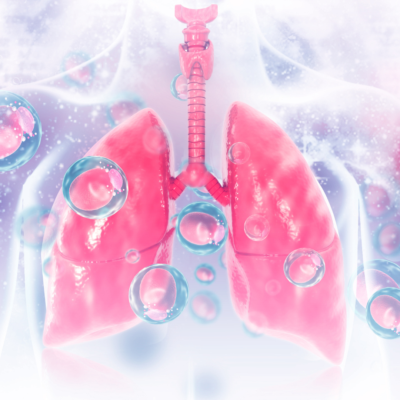Summary of Key Points:
- Public awareness of the health risks linked to high radon exposure is alarmingly low.
- Medical education must adapt to include a broader understanding of the secondary causes of lung cancer.
- Healthcare providers are essential in educating the public about radon exposure and its health risks; however, current knowledge within the medical community is limited.
Addressing Hidden Dangers: Expanding the Understanding of Lung Cancer Causes
Despite being the leading cause of lung cancer in people who do not smoke tobacco, radon is not a risk factor that many people are aware of when they think about their cancer risk. Radon, a colourless, odourless, and tasteless gas, poses significant long-term health risks. Dr. Daniel Berger, a junior neurology resident at the University of Calgary and specialist in the effects of radiation exposure on the brain, highlights the unsettling realization many face when learning about radon,
“What’s unique about radon is that it often becomes a new fear that maybe you didn’t know you had.”
This hidden danger poses a significant health risk to families, while often going undetected and unaddressed. Dr. Berger notes that without actively seeking out information, most people have little to no knowledge of radon and its link to lung cancer. He highlights how public health messaging around non-tobacco causes of lung cancer remains minimal, further complicating efforts to spread awareness.
“The stigma for so long has been that tobacco smoking is the singular cause of lung cancer, but there are so many causes of lung cancer. We need people to know about non-tobacco-related lung cancer causes, and that radon is the leading cause of those.”
Addressing the limited understanding of all lung cancer causes, including environmental exposures such as radon, is crucial. Insufficient public health messaging about radon and its risks worsens the lack of knowledge, as there’s still relatively little messaging around radon and other non-tobacco causes of lung cancer. Due to the limited messaging, most people are naturally unfamiliar with radon.
Dr. Berger advocates for increased public awareness and education about radon through expanded messaging, education, and a greater public health focus to bolster people’s understanding of radon. Ultimately, Dr. Berger emphasizes the need to expand public perception of lung cancer causes.
“Not enough people have an understanding of radon gas, and especially its attribution to lung cancer. Placing a radon test in your home is a great way to discover the radioactive radon gas levels in our homes.”
Dr. Berger’s message is clear: public perception of lung cancer causes must evolve to include environmental risks.

Unseen Threat: Radon’s Elusive Impact on Public Health
Dr. Siavash Zare-Zadeh, a first-year resident in the psychiatry program at the University of Calgary, brings another dimension to the discussion about radon, focusing on how its intangible nature makes it harder for people to grasp its urgency. He explains that, unlike immediate, visible health threats, radon exposure is a long-term risk, which causes it to fall off the radar for most people. As Dr. Zare-Zadeh puts it,
“If something tangible is affecting you right now, people will have more immediate access to address that issue,” he explains, “because radon is all about long-term exposure; most people mistakenly believe there is no urgency to test or mitigate.”
The perceived lack of urgency is one of the main reasons that radon remains poorly understood by both the public and medical professionals, despite its potentially severe implications. Radon is the second leading cause of lung cancer worldwide, and the leading cause of lung cancer in people who don’t smoke tobacco. Dr. Zare-Zadeh advocates for revising educational approaches to environmental health risks to bridge this knowledge gap and create radon awareness campaigns.
“For radon specifically, I don’t think there’s a lot of understanding about the impact that this carcinogenic exposure has in developing lung cancer,” he says. “We need to rethink how we teach environmental exposures of disease; there’s a huge amount of momentum to update the curriculum to reflect the current issues and evolving scientific literature.”
Dr. Zare-Zadeh further argues that while significant strides have been made in reducing tobacco use, the next critical step is to address secondary lung cancer risks, including radon. He notes that the public perception of lung cancer remains overly focused on tobacco smoking, even though radon is a major cause of the disease. Dr. Zare-Zadeh expresses that “there’s a consensus understanding within society right now that the biggest threat to developing lung cancer is smoking and that just isn’t true.” A shift in public health narratives to include environmental carcinogens like radon is essential in building a more informed public and medical community.
The Role of Healthcare Providers in Bridging the Knowledge Gap
While public health campaigns have made strides in educating people about the dangers of smoking, there is still a significant gap in understanding other lung cancer risk factors, such as radon exposure. Dr. Isaiah MacDonald, a PGY4 Medical Oncology resident at the University of Calgary, points out that radon is not commonly discussed and further emphasizes the knowledge gap with non-tobacco causes of lung cancer.
“Public knowledge about radon is minimal. If people even know that radon is a cause of lung cancer, I think that would be pretty good. It is not something we commonly learn or hear about.”

Dr. MacDonald underscores the need for better communication between healthcare providers and the public when it comes to environmental health risks such as radon. He argues that relying on individuals to seek out this information on their own is ineffective. Instead, proactive communication from primary care providers and government health agencies is essential.
“It’s likely people probably aren’t Googling how to avoid getting lung cancer,” he explains, “We need to have a combination of information coming from our primary care providers and government institutions to broaden public knowledge.”
Primary care providers and government agencies play a crucial role in disseminating information about radon and health risks. By integrating discussions about environmental health hazards into routine medical consultations and public health initiatives, healthcare professionals can empower individuals to take proactive steps in reducing lung cancer risks.
Bridging the Knowledge Gap in Medical Education
The knowledge gap around radon is not confined to the general public—it extends into medical fields as well. Dr. Jesse Irvine, a family medicine resident, points out that many early-career physicians have little to no understanding of radon gas and its health risks.
“If I didn’t have the background and research with radon gas [from my undergraduate research], I probably wouldn’t know what it is [despite having just graduated from medical school],” he admits, adding that “most early residents and early-in-training physicians don’t know what radon is, and have no idea how to test.”
The current gap in medical education is concerning, given the serious health implications of radon exposure, including its role as a leading cause of lung cancer. Dr. Irvine advocates for a multi-phase approach to address this issue to raise awareness and educate the public and healthcare professionals. He emphasizes that having family physicians spread the word about radon during patient consultations could significantly boost awareness.
“We need to educate physicians to have a better understanding, and having them spread that information to their patients would be extremely beneficial.”
Dr. Irvine also calls for regulatory changes to effectively address radon exposure. He notes that while Health Canada has set a limit of 200 Bq/m³ for radon exposure in homes, there is still a substantial risk of lung cancer at levels lower than that. “Anything over 100 Bq/m³ increases your risk of developing lung cancer by 16%,” he warns, arguing that stricter regulations should be implemented to lower this threshold and better protect public health.

A Collective Call to Action
The insights from Drs. Berger, Zare-Zadeh, MacDonald, and Irvine reveal a critical gap in public and professional awareness about radon and its health risks. As the next generation of physicians, their perspectives offer a clear call to action; radon, a leading cause of lung cancer, demands greater attention from the medical community, public health systems, and government regulators alike.
Their voices underscore the need to integrate radon education into medical training, strengthen public health messaging, and implement stricter regulatory standards. By taking these steps, we can significantly reduce radon-related lung cancers and build a healthier future for all Canadians. The time to act is now, and these future leaders are ready to lead the way.
